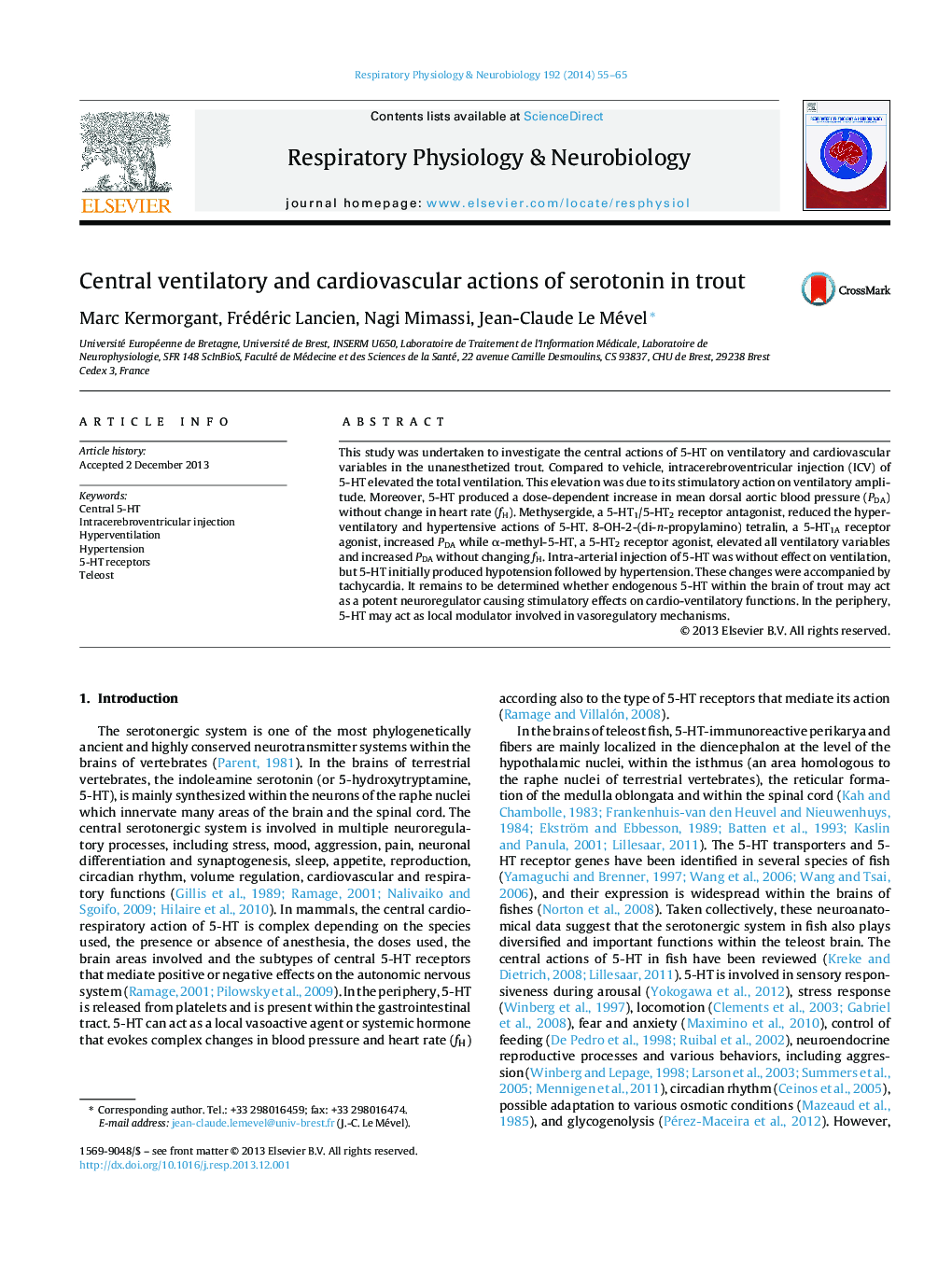| Article ID | Journal | Published Year | Pages | File Type |
|---|---|---|---|---|
| 2847041 | Respiratory Physiology & Neurobiology | 2014 | 11 Pages |
•In trout central injection of 5-HT stimulates ventilation and blood pressure.•5-HT1/2 receptors may be responsible for the central effects of 5-HT.•Intra-arterial injection of 5-HT provokes a biphasic change in blood pressure.•Endogenous 5-HT may act as a potent cardio-ventilatory neuroregulator.
This study was undertaken to investigate the central actions of 5-HT on ventilatory and cardiovascular variables in the unanesthetized trout. Compared to vehicle, intracerebroventricular injection (ICV) of 5-HT elevated the total ventilation. This elevation was due to its stimulatory action on ventilatory amplitude. Moreover, 5-HT produced a dose-dependent increase in mean dorsal aortic blood pressure (PDA) without change in heart rate (fH). Methysergide, a 5-HT1/5-HT2 receptor antagonist, reduced the hyperventilatory and hypertensive actions of 5-HT. 8-OH-2-(di-n-propylamino) tetralin, a 5-HT1A receptor agonist, increased PDA while α-methyl-5-HT, a 5-HT2 receptor agonist, elevated all ventilatory variables and increased PDA without changing fH. Intra-arterial injection of 5-HT was without effect on ventilation, but 5-HT initially produced hypotension followed by hypertension. These changes were accompanied by tachycardia. It remains to be determined whether endogenous 5-HT within the brain of trout may act as a potent neuroregulator causing stimulatory effects on cardio-ventilatory functions. In the periphery, 5-HT may act as local modulator involved in vasoregulatory mechanisms.
